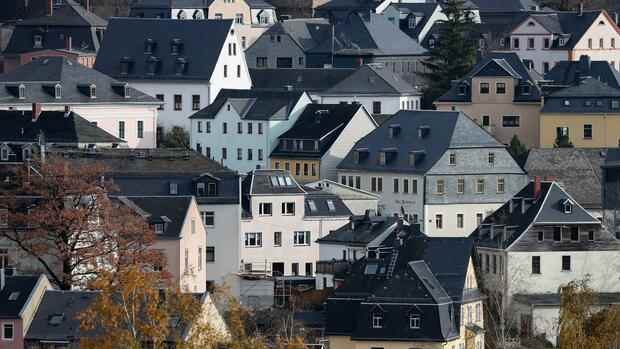The Bertelsmann Stiftung study sees a crumbling middle class.
(Photo: dpa)
Last week, the social market economy once again had bad press: ZDF reported that the “German middle class is shrinking”, the economist Marcel Fratzscher lamented “the broken promise of promotion” and “Spiegel Online” the “broken promise of the social market economy ”.
The basis for these statements was a study by the Bertelsmann Stiftung: It found that the proportion of the population belonging to the middle class has fallen from 70 percent to 64 percent since 1995.
If you take a look at the study, you can see that the German middle class, at 64 percent, is still two percentage points larger than the average for the OECD countries and only one point smaller than in Switzerland and Sweden, and two points smaller than in Austria and France.
The middle class has been stable since 2005 and achieved significant income increases in the years before the corona pandemic. At seven percent, the proportion of high incomes in Germany is below the OECD average, while the proportion of people at risk of poverty and poor incomes is on a par with comparable countries. This is data that doesn’t quite fit the headlines.
Top jobs of the day
Find the best jobs now and
be notified by email.
In truth, we are dealing with a success story, as we are achieving these values despite a significant increase in immigration of predominantly low-skilled workers, not least in the course of humanitarian aid. This puts pressure on the lower middle class, as the Bertelsmann Stiftung explains: “The likelihood that immigrants will belong to the middle class is lower than in the mid-1990s, but this could reflect the changed composition of the German population with a migration background.”
Daniel Stelter is the founder of the discussion forum beyond the obvious, which specializes in strategy and macroeconomics, and is a management consultant and author. Every Sunday his podcast goes online at www.think-bto.com.
(Photo: Robert Recker / Berlin)
And further: “The increase in so-called humanitarian migrants from 2015 onwards led to an increase in the proportion of immigrants (…) who may need longer to integrate into the German labor market.”
To ignore this aspect and instead to write about “broken promises of promotion” and implicitly about the need for more redistribution distracts from the actual challenges we are facing: How do we succeed in qualifying the lower middle class in such a way that they manage to move up?
The odds are not as bad as one might think. Demographic development alone will lead to a sharp rise in demand for qualified workers.
Let’s continue the success story of the social market economy! If we have succeeded in stabilizing the middle class at a high level in recent years, we must now challenge and encourage long-established residents and newcomers so that they will form the backbone of society in the future and achieve higher real incomes than today.
More: “Paid work no guarantee of security” – the middle class is afraid of decline in spite of rising incomes
